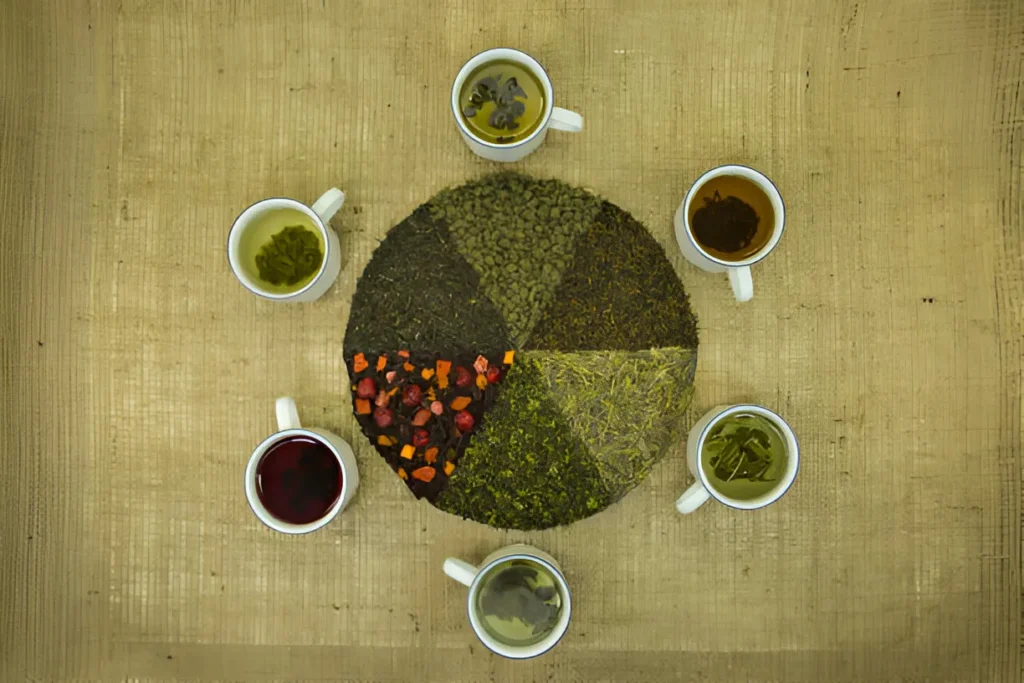The pursuit of flavour, tradition, and health often merges in a simple, elegant cup of green tea. In Japan, where tea is more than just a beverage – it’s an integral part of the culture, few varieties are as cherished as sencha. Sencha is not merely a tea; it is a testament to Japan’s dedication to craftsmanship, subtlety, and the Zen of living. In this exploration of Japan’s finest green tea, we delve into the art of sencha, from its cultivation to its ceremonial preparation and consumption.
Understanding Sencha
Sencha is the most popular and widely consumed variety of Japanese green tea. It accounts for about 80% of the tea production in Japan and has a history spanning centuries. The name ‘sencha’ translates to ‘simmered tea,’ referring to the method of infusing whole tea leaves in the water, which is distinct from the powdered form known as matcha. Sencha is celebrated for its delicate balance of sweetness and astringency, with flavour notes that range from floral to vegetal, making it a refined choice for tea enthusiasts around the world.
The Cultivation of Quality
The journey to create premium sencha begins with the careful cultivation of tea bushes. Japan’s tea farms are often shrouded in mist, with rich volcanic soil that imparts a unique character to the tea. The first and second flush — the initial spring harvests — yield the highest quality leaves, rich in flavor and nutrients. These young leaves, packed with amino acids, give sencha its celebrated umami taste.
Processing the Leaves
Once harvested, the fresh tea leaves undergo a meticulous processing method. They are steamed to prevent oxidation, which preserves the vibrant green colour and the rich, grassy flavour that is characteristic of sencha. This steaming process sets Japanese green tea apart from Chinese green tea, which is typically pan-fired. After steaming, the leaves are rolled, shaped, and dried, which results in the needle-like appearance of high-quality sencha leaves.
The Brewing Technique
Brewing sencha is an art form that requires attention to detail. The water temperature and steeping time greatly influence the taste of the tea. Water that is too hot can bring out bitterness, while water that is too cool may not extract the full range of flavours. Typically, sencha is brewed with water at around 70-80 degrees Celsius, and steeped for about 1 minute. This methodology ensures a cup of tea that is the perfect symphony of its intended flavour profile.
Health Benefits of Sencha
In addition to its delightful taste, sencha is held in high esteem for its health benefits. It is packed with antioxidants, particularly catechins, which have been linked to numerous health benefits. Drinking sencha regularly may contribute to cardiovascular health, weight management, and stress reduction. Moreover, it provides a natural source of energy without the crash associated with the caffeine in coffee.
Savouring the Flavour
Sencha, with its spectrum of flavours, is highly dependent on the season of harvest and the specific region where it is grown. No two sencha teas are exactly alike, and part of the joy of drinking sencha is discovering the subtle differences each variety has to offer. A sip of high-quality sencha can provide tasting notes of seaweed, fresh grass, melons, and even flowers, depending on the region and the harvest.
Sencha in Japanese Culture
In Japan, sencha is not just a drink; it is part of the bond that unites friends, family, and colleagues. It is common for Japanese households and businesses to have a space dedicated to tea preparation, where the act of making and serving sencha is a gesture of hospitality and respect. The tea plays a central role in social gatherings, from casual visits to formal meetings.
The Art of Sencha and Ceremony
Although sencha does not have a ceremonial preparation as elaborate as the Japanese tea ceremony associated with matcha, sencha nonetheless holds its form of ritual. Known as senchadō, the ceremony is less formal but highly focused on the preparation and enjoyment of sencha. It emphasizes the appreciation of the tea’s aesthetics, from the brewing process to the serving and the ambiance created during the affair.
The Global Appeal of Sencha
While sencha is rooted deeply in Japanese culture, its appeal has transcended borders. Around the world, tea connoisseurs and health enthusiasts have embraced sencha for its flavour and benefits. Its versatility also makes it a favourite among chefs and food innovators who use sencha in modern recipes, infusing dishes with its distinct taste.
Choosing the Right Sencha
Selecting the perfect sencha, much like choosing a fine wine, can be a personal experience. Beyond the first and second flush, one must consider the region, the tea’s grade, and the farm’s practices. Organic and single-estate sencha varieties are highly sought after for their purity and traceable origins.
Conclusion
The art of sencha lies in its ability to harness the simplicity of nature into a complex and satisfying experience. It is a form of passive meditation, where the act of brewing and sipping tea becomes a momentary escape, affording tranquillity and pleasure. For those seeking to discover Japan’s finest sencha, the journey involves more than just a taste exploration; it is an immersion into a tradition where every leaf tells a story of the land, the people, and the values that have nurtured it for generations.
Whether you are a seasoned tea drinker or new to the world of green teas, embracing the art of sencha will undoubtedly open the door to a world where taste, health, and culture blend seamlessly. It is an experience that engages the senses, calms the mind, and revitalises the body, encapsulating the very essence of what makes Japanese green tea a cherished beverage worldwide.
Also Read: Spinal Arthritis Management: Tips, Treatments, and Daily Habits for Living Well


